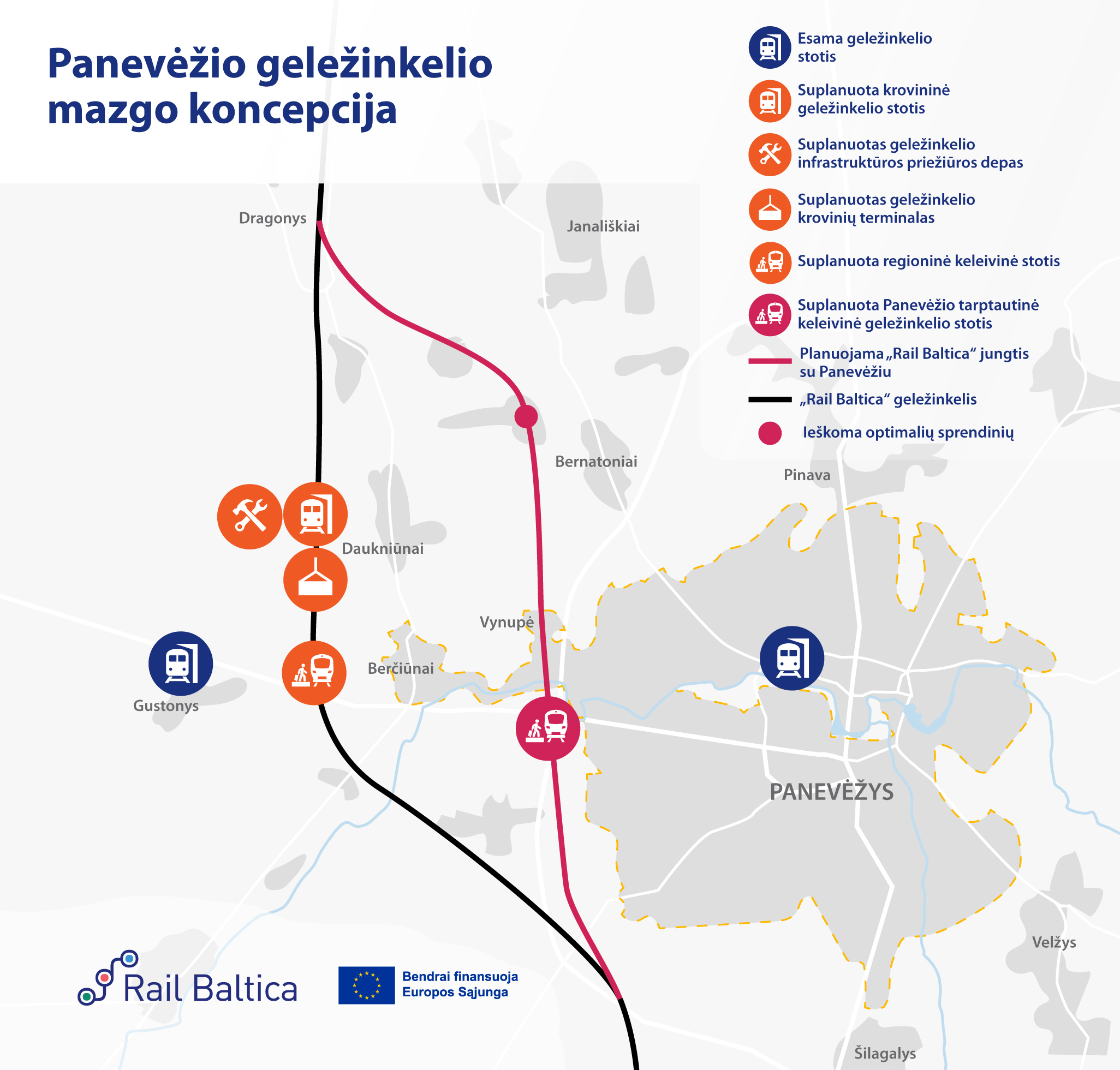The Ministry of Transport and Communications has approved an alternative for the development of the Rail Baltica railway infrastructure in Panevėžys. Following intensive discussions with residents of the Panevėžys region, the project developers and the municipality, and considering the standards applicable to the European high-speed rail track, the first of three proposed alternatives was chosen. This option envisages an international passenger station in the western part of the city, near the existing transport node, the city bypass.

“We are grateful to the public and municipalities for their great involvement in the selection of the optimal Rail Baltica railway route in Panevėžys. Discussions will continue in order to find the best solutions for both local residents and Lithuania as a whole. It is important to emphasise that this international project of European significance will not only provide the Panevėžys region with better transportation links, but will also stimulate economic growth, additional investments, and a wider field of activity for local businesses,” said Loreta Maskaliovienė, Deputy Minister of Transport and Communications.
To mitigate the impact for the population and the existing urbanised areas, experts from the Ministry of Transport and Communications and LTG Infra initiated discussions with the Department of Cultural Heritage and the Ministry of Culture on rerouting the European track towards a former narrow gauge railway section that holds cultural heritage status.
“In cooperation with the relevant authorities, we have succeeded in finding a compromise that not only preserves the narrow gauge railway section as a cultural heritage site for future generations, but also enables its territory to be utilised for the development of Rail Baltica,” said Mantas Kaušylas, Head of Project Development for Rail Baltica Management Projects at LTG Infra. “Bringing the European track closer to the narrow gauge railway, we will safeguard 23 buildings in the Panevėžys district that are within the planned track area. The proposed solutions will undergo further evaluation and refinement in the next stage of specific planning,” he added.
According to the approved alternative, a freight station is planned near the village of Berčiūnai, and a regional passenger station is planned near the village of Gustonys. There are already plans for an infrastructure maintenance depot, freight terminals, loading bays and sites for military equipment.
In July, the plan developer Kelprojektas presented a total of three alternatives for the Panevėžys railway node for public evaluation. All of them have been submitted for public consultation following a strategic environmental impact assessment, which analysed environmental, social and economic factors. A multi-criteria evaluation of alternatives and a cost-benefit analysis have also been carried out.
A total of three Rail Baltica international passenger stations are planned in Lithuania – in Vilnius, Kaunas and Panevėžys. It is planned that passenger trains will be able to travel at speeds of up to 249 kilometres per hour when the European-standard Rail Baltica railway is built. The train journey from Panevėžys to Kaunas would then take about 37 minutes, while to Riga – about 55 minutes.
Rail Baltica is the largest railway infrastructure project in the history of the Baltic states. It will see the construction of an electrified, European-standard double-track high-speed railway linking Warsaw, Kaunas, Vilnius, Panevėžys, Riga, Pärnu, and Tallinn.
The total length of the Rail Baltica line in the Baltics is 870 km: 392 km in Lithuania, 265 km in Latvia, and 213 km in Estonia.
